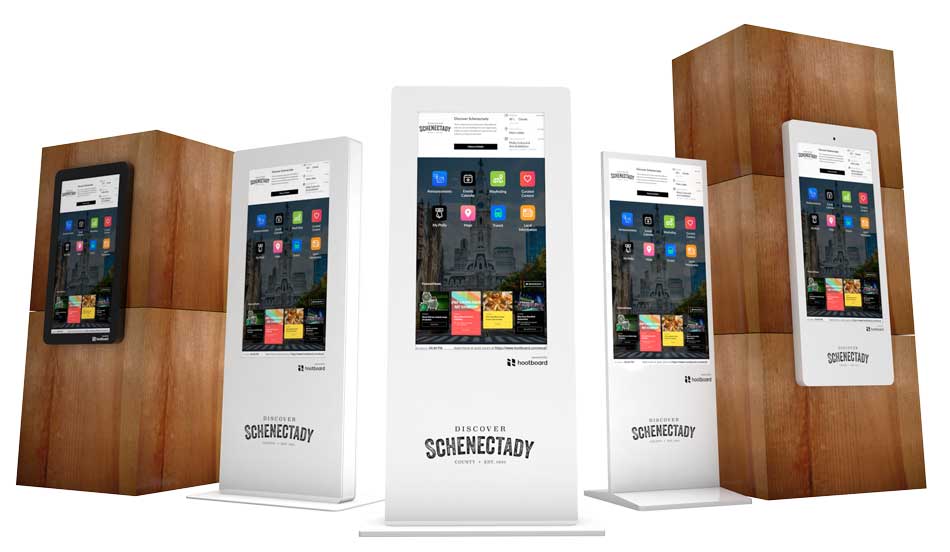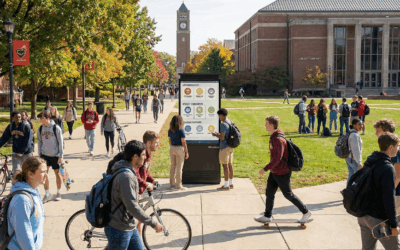Visitor information kiosks OR tourist kiosks are not just a fad but quickly becoming a real method of getting your visitors to enjoy your destination. While you might have multiple reasons for deploying a tourist information kiosk network, here are some of the common ones we hear.
Influence visitor activities
Yes as obvious as it may sound, you want to clearly understand why you need kiosks and this shall be the main goal. There are multiple reasons that lead you to believe you have lesser control of your visitor’s actions. Below are a few:
-
- Your visitor center traffic has been reducing for years
- Only a few key attractions at your destination are drawing most of the traffic i.e. Overtourism
- Visitors don’t seem to be getting the full experience of what your destination has to offer and leading to missed word-of-mouth/social-media opportunities
- Your destination is large enough to need multiple visitor centers but its hard to operate more
- You want to reach visitors where they are.

Influence community narrative
If citizens and businesses of your own community are not positioning your destination correctly, you have a huge missed opportunity. Effective visitor information can even double down as citizen information allowing you to influence how citizens communicate about your destination with possible visitors. When citizens and businesses in your community are not accurately or effectively promoting your destination, it can lead to missed opportunities for tourism and economic growth. By providing clear and compelling visitor information, you can help position your destination as an attractive option for potential visitors and encourage them to choose your community over others.

Positively impact business
You want to provide visibility to your destinations businesses and attractions. Having effective visitor information using kiosks allows your DMO to impact the economic development process. Other ways it can positively impact business are:
-
- Provides an interactive and engaging way for customers to learn about products and services
- Reduces perceived wait times by providing entertainment or informational content while customers wait
- Can be used for self-service transactions, such as ordering food or purchasing tickets, reducing the need for additional staff
- Allows businesses to collect valuable data on customer behavior and preferences through analytics tracking
- Increases brand awareness and recognition by displaying dynamic content and messaging
- Streamlines the customer experience by providing easy access to frequently asked questions, store maps, and other helpful information
- Can be customized to match specific branding or promotion campaigns, creating a cohesive marketing message across all channels
- Enhances customer satisfaction by providing a more convenient and personalized experience, leading to increased loyalty and repeat business.

Pandemic imperatives
We cannot ignore imperatives imposed as a result of the pandemic. You might be worried that you might not get enough volunteers, or, you want to reduce the traffic at your visitor center. You might not be planning on printing your traditional visitor guide.
-
- Provides visitors with self-service options to access information and resources, reducing the need for additional staff
- Can be available 24/7, allowing visitors to access information even when the visitor center is closed or understaffed
- Offers an interactive and engaging way for visitors to learn about local attractions, events, and services
- Allows visitors to customize their experience by selecting specific interests or preferences, providing a personalized experience without relying on staff recommendations
- Can provide multilingual support through language selection options, accommodating a wider range of visitors without requiring additional staff
- Collects valuable data on visitor behavior and preferences through analytics tracking, informing future staffing decisions and resource allocation
- Reduces strain on existing staff by offloading simple inquiries and requests to the touch kiosk, allowing them to focus on more complex tasks or high-priority needs.

Reduce waste
All of us know about the flyer racks. These flyers are mostly wasted and a costly expense for your area attractions. Digital information is extremely cheap and allows your DMO and area attractions to disseminate information. Additionally, digital information is trackable.
-
- Kiosks can provide digital alternatives to printed materials such as brochures, flyers, and menus, reducing the need for paper production and printing.
- Visitors can access information digitally through touch screens, mobile devices or QR codes, eliminating the need for physical copies.
- Kiosks can be updated easily and frequently with new information without having to reprint materials each time.
- Digital kiosks also reduce the amount of ink cartridges needed for printers, further reducing waste.
- Touch screen kiosks also offer interactive experiences that create a more engaging experience for visitors. This could lead to fewer people taking printed materials home as souvenirs or references.
- Kiosk software may allow users to email themselves relevant information instead of printing it out which saves both paper and resources.
The use of digital kiosks is an eco-friendly solution that contributes towards sustainable practices. By reducing the amount of paper used in advertising or informational material production, companies can save money on printing costs.

Create additional revenue sources
The pandemic has impacted how all DMOs think of revenue. Diversification has become important and kiosks can allow your DMO to create an additional source of revenue. Once you are clear of your objectives, get ready with a comprehensive budget proposal. Here’s an article on what you will need to create one.




